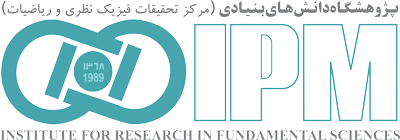“School of Nano-Sciences”
Back to Papers HomeBack to Papers of School of Nano-Sciences
| Paper IPM / Nano-Sciences / 18241 |
|
||||||
| Abstract: | |||||||
|
Recent discovery of correlated electronic phases in twisted heterostructures raised a surge of interests in
studying models and materials with flat bands where the electronic excitations are nearly dispersionless in
momentum space. As such, the kinetic energy is quenched and the correlations are enhanced, giving rise to a
plethora of unusual magnetic, superconducting and transport behaviors. Finding materials whose energy bands
are completely flat is rather challenging, yet those whose dispersion is flat only in a portion of the momentum
space might be more accessible in material search. In this work, we propose a partially flat-band system on
a square lattice. Using the Hubbard model, it is demonstrated that the suppression of the electronic kinetic
energy in the flat portion of the band dispersion drives the system to Stoner ferromagnetism even at very weak
interactions, i.e., much smaller than the bandwidth, with significantly enhanced Curie temperature. While the
low-energy magnon modes are well defined collective excitations, flat magnon bands can be observed at high
energies. We show that the strong interaction leads to reduction of the flat portion of the magnon band. However,
tuning the chemical potential at a strong interaction regime may lead to spin density wave at finite wave vectors.
Then, focusing on the non-magnetic correlated phase and using dynamical mean-field theory, we demonstrate
the appearance of a flat-band induced sharp peak in the density of states in addition to the correlation-induced
Mott bands. Furthermore, the large Seebeck coefficient and the figure of merit of the proposed partially flatband model, compared to symmetric regular band models, put them in the category of efficient thermoelectric
materials.
Download TeX format |
|||||||
| back to top | |||||||



















